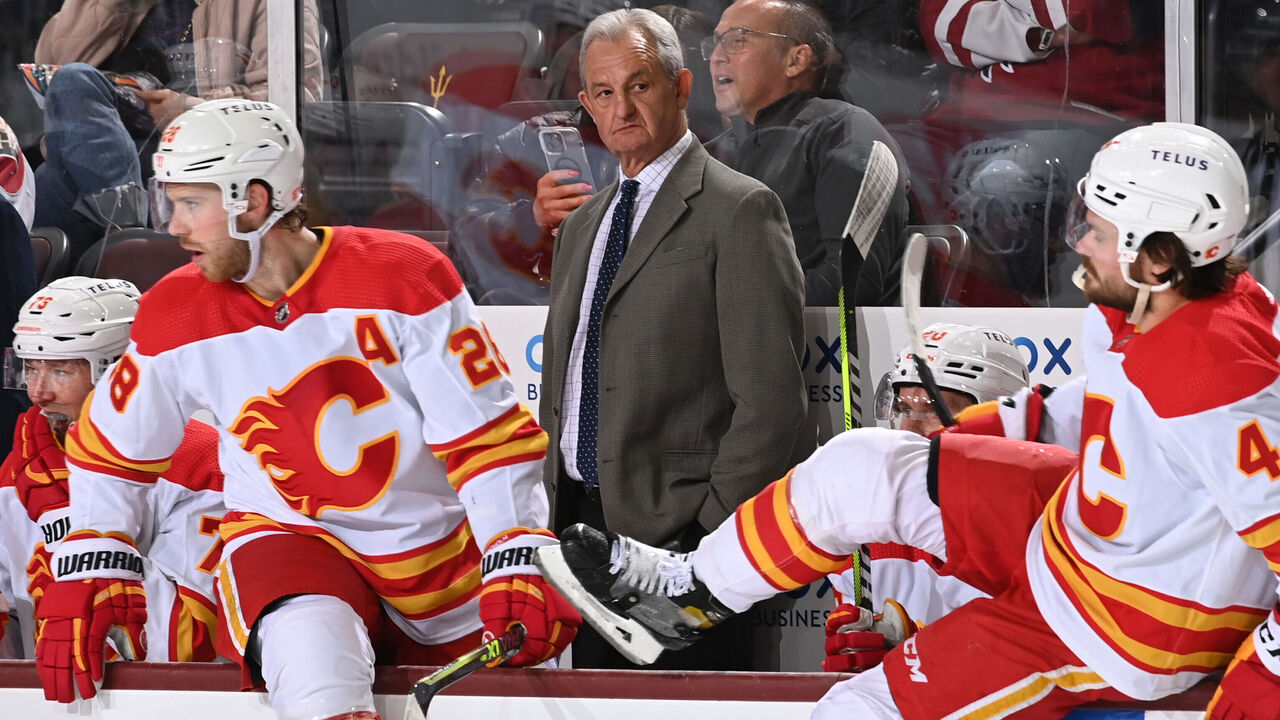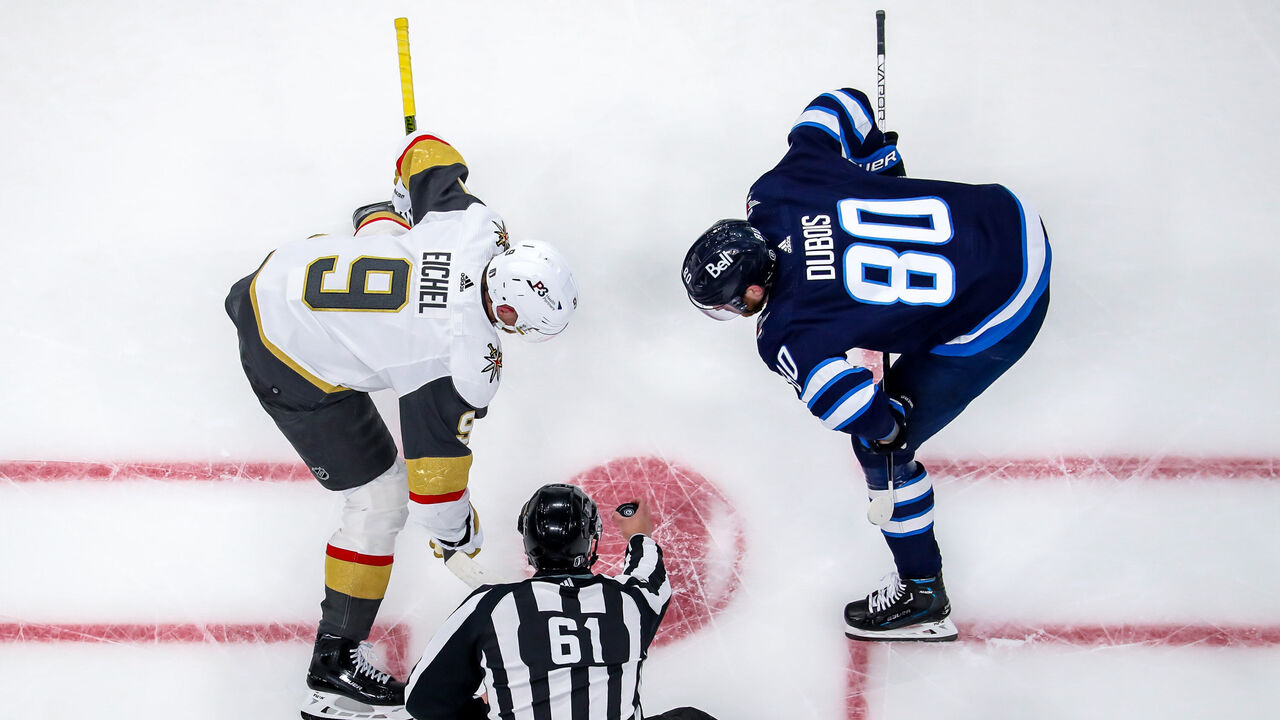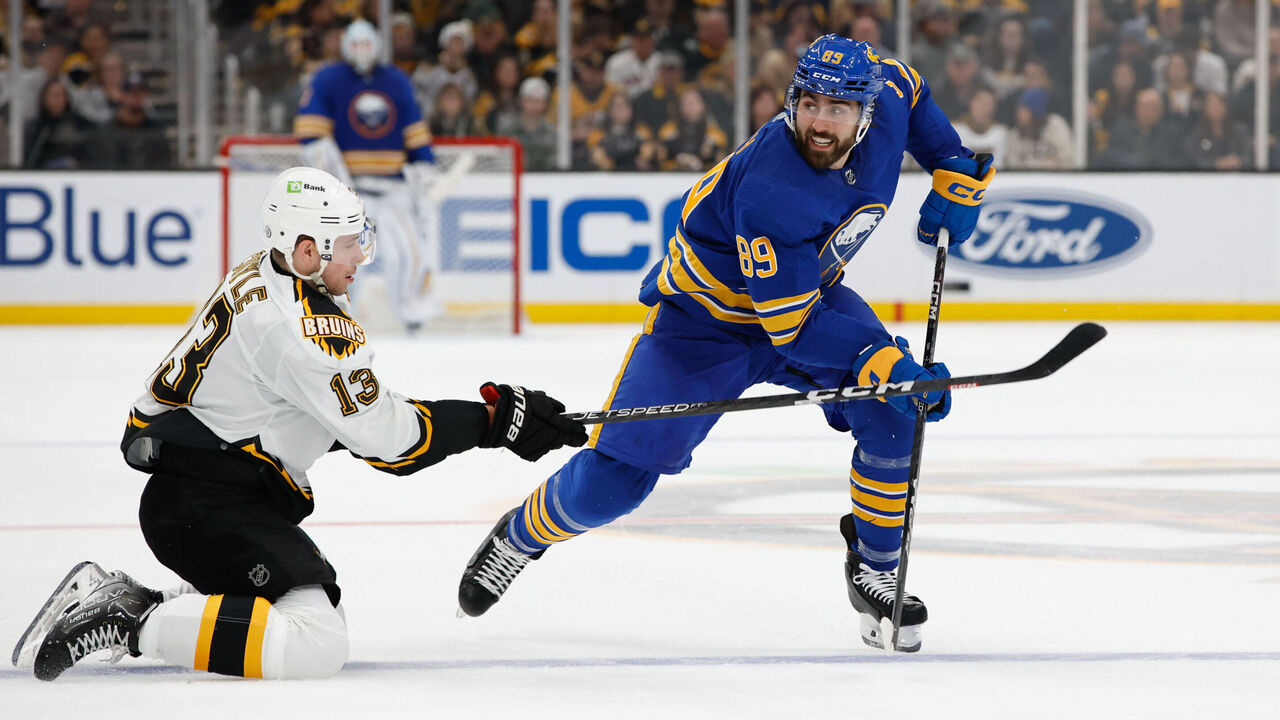Revisiting Panthers-Flames blockbuster, playoff trends, and 4 other NHL items
A week after the free-agent frenzy last summer, the Florida Panthers and Calgary Flames finalized a trade wholly deserving of the blockbuster label.
In case you forgot the particulars: Calgary sent star forward Matthew Tkachuk and a fourth-round draft pick to Florida for winger Jonathan Huberdeau, defenseman MacKenzie Weegar, prospect Cole Schwindt, and a first-rounder. The July 22 deal included an eight-year, $76-million extension for Tkachuk.

At the time, many journalists and analysts - myself included - liked the deal for the Flames. Tkachuk had told then-general manager Brad Treliving he wouldn't sign a long-term contract, and another cornerstone player, Johnny Gaudreau, had just left for the Columbus Blue Jackets. The consensus reaction was essentially: Gotta hand it to Treliving, he made the best of a crappy situation!
I liked it for the Panthers, too, but with one important caveat - that they'd be in turmoil if the gamble didn't pay off. GM Bill Zito shipped out a lot of premium parts for one guy and a mid-round pick not long after the Panthers claimed the 2021-22 Presidents' Trophy (and then lost in the second round of the playoffs).
A season later, with Calgary missing the postseason and Florida pushing the juggernaut Boston Bruins to seven games in the first round, the trade can be viewed only as a victory for the Panthers. Tkachuk turned in a 109-point, Hart Trophy-caliber regular season to solidify his status as one of the league's true superstars. He's been the ultimate all-situations X-factor against the Bruins. Put another way, the Panthers don't clinch a postseason berth without Tkachuk, and they aren't playing Sunday without Tkachuk.
Big picture, there's still work to do in Florida. In a transition year of sorts, the Panthers didn't exactly flourish in the regular season under new coach Paul Maurice. Maybe they learned to play a brand of hockey more conducive to winning in the playoffs - I'll give them that. But Florida sorely missed Weegar on the blue line, and the combination of being capped out and not having a first-round pick until 2026 hamstrung Zito from making any midseason adjustments to the roster that ended up being the lowest-ranked qualifier for the playoffs in the East.

The Flames, meanwhile, are at another crossroads, with Treliving and the organization parting ways. (His replacement has yet to be hired.) Darryl Sutter remains employed, though reports suggest the old-school coach and Calgary's core may not be on the same page. This relates directly to the trade, seeing as Huberdeau's production dropped by 60 points. He's said he lost his swagger during his first year in Calgary. Better find it sooner than later: Huberdeau's eight-year, $84-million extension doesn't start until the fall.
There were other factors at work. Goalie Jacob Markstrom performed well below his standard. Another offseason acquisition, Nazem Kadri, had an up-and-down year. It took Weegar half a season to get going. Still, in the short term, it circles back to Huberdeau versus Tkachuk, and the Panthers at this point employ the better hockey player, who's nearly five years younger and $1 million less expensive per year on average.
Since Tkachuk wasn't interested in staying in Calgary, the Flames likely wouldn't want to travel back in time for a do-over. Treliving's hands were tied. Through a season, though, the Panthers have the upper hand. The next question is: How does Year 2 shake out? Does a taste of playoff success launch Florida to new heights? Or does Calgary rebound under new leadership?
Early playoff trends

As the first round winds down, let's look at a few league-wide playoff trends. (All statistics current through Thursday's games.)
Heavy hockey: We hear that term a lot this time of year - and for good reason. Our eyes tell us the style of play is drastically different in the playoffs, and the early Sportlogiq data definitely supports the assertion.
Teams have generated fewer scoring chances off the rush (11.5 per game in the postseason versus 11.8 in the regular season). The same goes for chances generated off the cycle (18.2 per game versus 19.1). Meanwhile, chances off the forecheck - which require serious grit - have risen to 5.1 per game from 4.6. What's more, the number of puck-battle wins and screen shots have jumped to 55.6 and 12.9 per game in the playoffs from 50.2 and 10.5 in the regular season, confirming that spring hockey's filled with all kinds of conflict.
Interestingly, the prevalence of major penalties is unique to this postseason. There have been 0.48 majors per game this year compared to 0.24 in last year's playoffs, 0.21 in 2020-21, and 0.28 in 2019-20. Most of this can be attributed to the uptick in fights. (HockeyFights.com counts nine.)

Goals off faceoffs: Grabbing a drink from the fridge during a stoppage in play has been a poor choice of late. In just 40 playoff games, a whopping 28 goals have been scored within 10 seconds of an offensive-zone faceoff win.
Among these well-executed set plays: game-winning goals by Toronto's Morgan Rielly, Vegas' Chandler Stephenson, and New Jersey's Ondrej Palat.
As Mike Kelly of NHL Network and Sportlogiq predicted last week, this trend has tapered off over the past week or so due to coaching adjustments. The overall numbers are still staggering, though, as this year's first-round per-game rate (0.70 faceoff goals) far exceeds 2021-22 (0.43) and 2020-21 (0.38).
Power-play goals: Since the NHL started tracking power-play success rate in 1977-78, there's been no equal to the 1980-81 playoffs, when teams combined for a league-wide power-play percentage of 25.1. Well, no equal until now, that is - power plays are clicking at 25.2% so far this postseason.
The high-octane Edmonton Oilers, who set an NHL record for power-play prowess in the regular season, lead the charge in the playoffs, scoring eight goals in only 14 opportunities. The Winnipeg Jets, Dallas Stars, Toronto Maple Leafs, and Bruins are also all above 30%.
Tuch's game-day routine

During the NHL regular season, there are roughly 730 rostered players at any given time. Each of them has a unique game-day routine, with age, home life, temperament, tendency toward superstition, and other factors affecting how they go about their preparation prior to puck drop. Ever wonder what a routine looks like?
Here's Alex Tuch's game-day routine when the Sabres are playing in Buffalo.
Morning
Wake up at 7:50 a.m., take golden retriever Teddy outside
Arrive at KeyBank Center at 8:30 a.m., eat the usual breakfast in the cafeteria ("ham, pepper, onion, scrambled, with breakfast potatoes; coffee; water")
Check on equipment for any issues (i.e. torn skate laces, ripped gloves)
Solve the latest USA Today crossword puzzle in the trainer's room
Attend a team meeting, stretch, get dressed for morning skate
Skate, shower, grab a pre-game meal from the cafeteria on the way out of KeyBank ("penne alla vodka with chicken and broccoli")

Afternoon
Eat meal, take Teddy for a walk around the neighborhood with wife Kylie
Relax at home, nap from 1:30-3 p.m., shower, suit up
Stop for coffee en route to KeyBank, tip Starbucks barista well
"I changed from a venti to a grande with light ice this year. Big move!"
"The manager at Starbucks is like, 'Alex, same order?' I'm like, 'Yup. Thank you!' Not only do I do a mobile order, but she actually puts me ahead of the line. She's a super sweet lady. She takes good care of me."
Arrive at the rink at 3:50 p.m., 4 if there's traffic or a long line at Starbucks
Change out of suit, eat two English muffins (one with butter and jelly, the other with peanut butter and honey) while sipping on coffee
Make drinks: two for hydration, one for energy, two are plain water
Eat a "little waffle thing for energy" before taping three hockey sticks
Solve the LA Times crossword puzzle with the team's athletic trainers
"Early in the week, we can usually do the crossword alone. Thursday to Saturday, we start alone and then usually come together to finish. Sunday, we just come together right away. It's too hard. It's really hard."
Attend a second team meeting, get stretched out by trainer Bob Mowry
Play sewer ball with teammates (the game where players stand in a circle and kick a soccer ball), finish warmup with dynamic exercises
Settle into stall, put on equipment precisely 26 and a half minutes ahead of puck drop

And that's basically it.
Tuch, who posted a career-high 79 points this season, says he doesn't get hung up on the exact timing of his rituals. If, for instance, he's putting on his equipment with 25 minutes on the clock instead of 26 and a half, he knows not to panic.
"It's fine. It's OK. I move on," the veteran of 379 games says with a smile.
The busyness of the routine keeps Tuch in a positive headspace on game day.
"It allows me to focus on simple tasks instead of thinking about the game all day," Tuch says. Then, with a short chuckle, he adds: "Like this interview right now. It's throwing me off a little bit. But it's not going to affect me or my day."
Parting shots
Leon Draisaitl: The hockey world doesn't appreciate Draisaitl as much as it should. The Oilers superstar is in the mix for second-best player in the world, but we still probably underrate his brilliance. He's a four-time 100-point guy. Last year, with one functional leg, he posted 32 points in 16 playoff games. He's recorded 69 points in 42 career playoff games - an absurd rate of production that he's padded with a monstrous performance during Edmonton's first-round series against the Los Angeles Kings. Draisaitl was on the ice for each of the Oilers' first 14 goals, and he's now tied for third in scoring with 10 points in five games. Bonkers stuff.
Most 3-Point playoff games since 2016-17
— Big Head Hockey (@BigHeadHcky) April 20, 2023
15 — Nikita Kucherov
13 — Leon Draisaitl
9 — Nathan Mackinnon
9 — Connor McDavid
7 — Brad Marchand
Kucherov has played 92 games
Draisaitl has played 39 games pic.twitter.com/0Ym7aXaLLx
Derek Lalonde: The Detroit Red Wings head coach has been fantastic on Sportsnet broadcasts. His insight on Andrei Vasilevskiy, the goalie for his former team, the Tampa Bay Lightning, even went viral. Lalonde's set to coach the U.S. at the world championship in Finland and Latvia, which starts May 12, so he won't be in the studio much longer. It's surprising Red Wings general manager Steve Yzerman allowed Lalonde's foray into TV to happen at all. Yzerman's known to be a very tight-lipped executive. Maybe Lalonde's contract includes a broadcasting clause? Otherwise, his mere presence on Sportsnet doesn't add up, given his main gig and who he reports to in Detroit.
Incredible info from Derek Lalonde (fmr TBL asst coach) on Vasilevskiy's weakness:
— Jack Han (@JhanHky) April 25, 2023
"We did a study...he was one of the lower-percentage goalies in finding pucks from the point...we changed our entire Dzone (coverage)." pic.twitter.com/xNOE1TbiYB
Brock Faber: Matthew Knies is getting plenty of love for his seamless transition from the University of Minnesota to the Maple Leafs - and rightfully so. But I've been even more impressed by Knies' former college teammate Brock Faber. In the Minnesota Wild's final eight games (two in the regular season and six in the playoffs), Faber wasn't on the ice for a goal against. That's zero goals surrendered in 127 minutes of action for a 20-year-old rookie who was mainly paired with the offensively-minded John Klingberg. Faber, who's a sturdy 6-foot-1, 200 pounds, has such a steadying presence, and his entry-level contract ($925,000 through 2024-25) is a boon for a Wild team that's in salary-cap hell. Check out his diving save in Game 1 overtime:
BROCK FABER IN THE CLUTCH! 😮
— NHL (@NHL) April 18, 2023
A literal game-saver. #StanleyCup pic.twitter.com/u9ikCJB5TB
Takes, Thoughts, and Trends is theScore's biweekly hockey grab bag.
John Matisz is theScore's senior NHL writer. Follow John on Twitter (@MatiszJohn) or contact him via email ([email protected]).